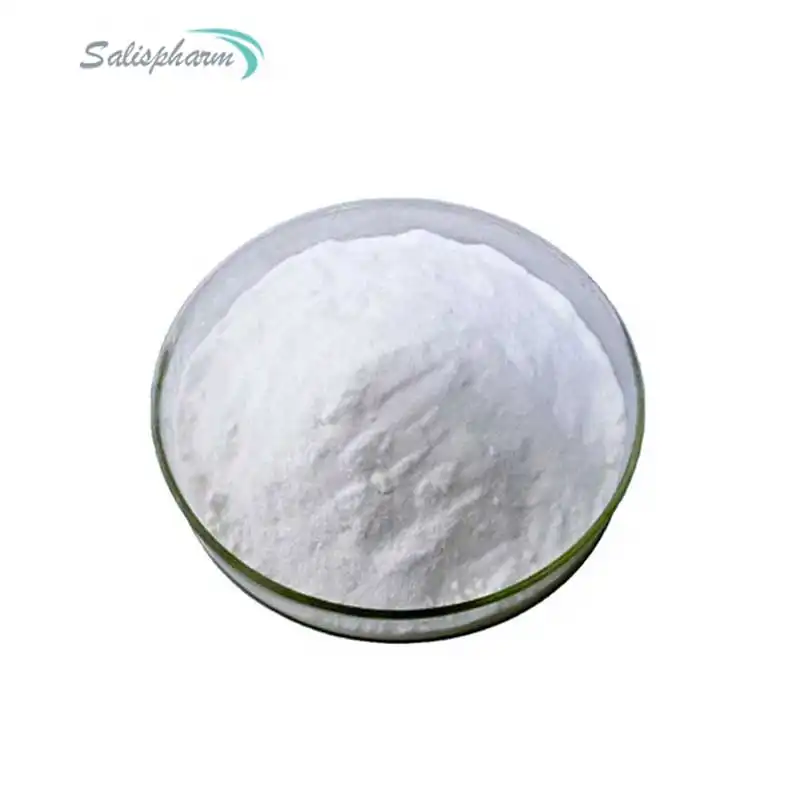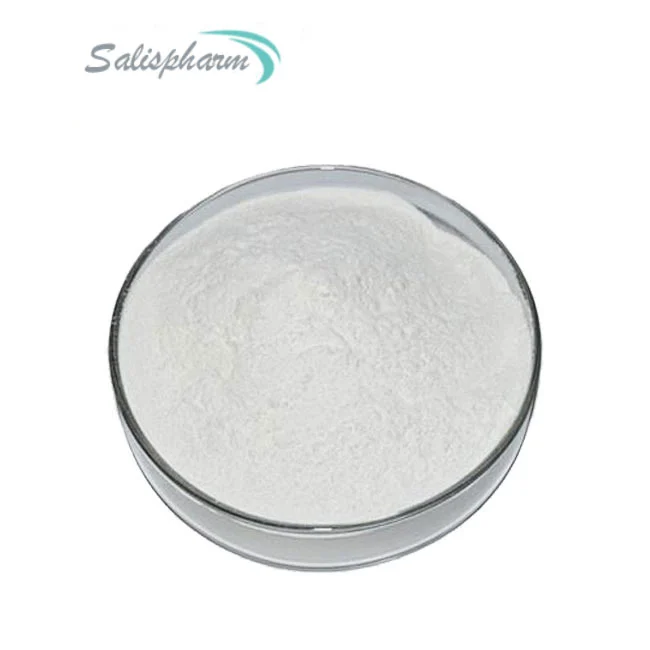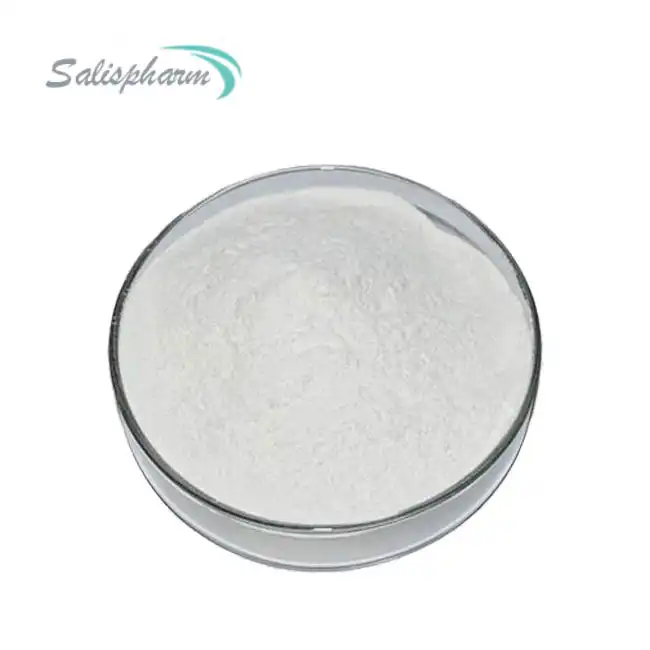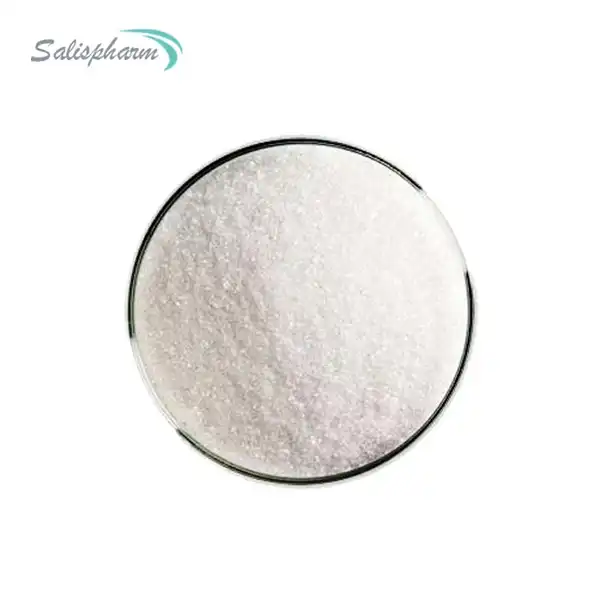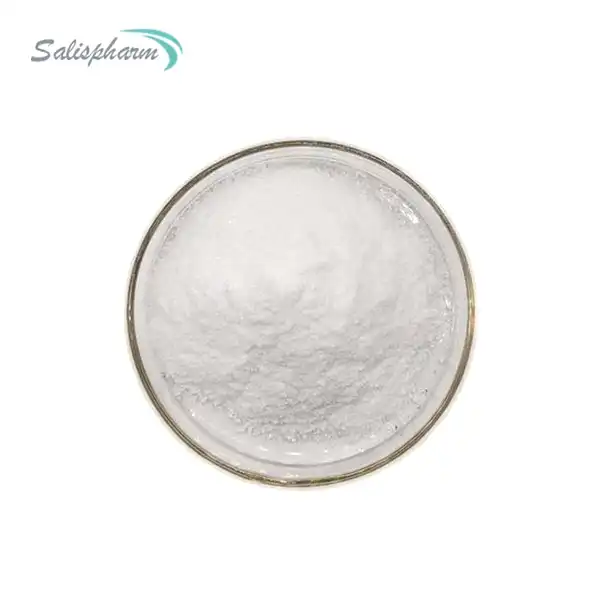Olmesartan medoxomil powder, a popular angiotensin II receptor antagonist, is widely prescribed for the treatment of hypertension and heart failure. This medication works by blocking the action of angiotensin II, a hormone that causes blood vessels to constrict, thereby lowering blood pressure. The optimal timing for taking this medication—whether in the morning or evening—has been a topic of interest for many patients and healthcare providers. This article will explore the factors that influence the best time to take olmesartan medoxomil powder, considering the body's circadian rhythms, blood pressure patterns, and individual patient needs.
The importance of timing in medication administration has gained increasing attention in recent years, as researchers and clinicians recognize the potential impact of chronotherapy on treatment efficacy and patient outcomes. Chronotherapy refers to the practice of synchronizing drug administration with the body's natural biological rhythms to optimize therapeutic effects and minimize side effects. In the case of antihypertensive medications like olmesartan medoxomil powder, understanding the interplay between dosing time and the body's circadian blood pressure patterns is crucial for achieving optimal blood pressure control.
What Are the Benefits of Taking Olmesartan Medoxomil Powder in the Evening?
The human body operates on a 24-hour cycle known as the circadian rhythm, which affects various physiological processes, including blood pressure. Blood pressure typically follows a diurnal pattern, with higher levels during the day and a natural dip at night. This nocturnal dip, known as "dipping," is an important physiological process that allows the cardiovascular system to rest and recover.
Some studies suggest that taking blood pressure medications in the evening may better align with the body's natural nocturnal drop in blood pressure. This alignment could potentially enhance the medication's effectiveness and provide several benefits:
1. Improved Blood Pressure Control: Evening dosing of olmesartan medoxomil powder may help maintain a more consistent blood pressure profile throughout the 24-hour period. By reinforcing the natural nocturnal dip, it could lead to better overall blood pressure control, particularly during the early morning hours when blood pressure typically begins to rise.
2. Reduced Risk of Cardiovascular Events: Research has shown that individuals who experience a normal nocturnal dip in blood pressure have a lower risk of cardiovascular events compared to non-dippers. By promoting dipping through evening dosing, olmesartan medoxomil powder might contribute to a reduction in cardiovascular risk.
3. Protection Against Morning Surge: The early morning hours are associated with a natural surge in blood pressure, which coincides with an increased risk of cardiovascular events such as heart attacks and strokes. Evening dosing of olmesartan medoxomil powder may help mitigate this morning surge by ensuring that the medication's effects are at their peak during this critical period.
4. Potential Organ Protection: Some studies suggest that evening dosing of antihypertensive medications may offer better protection for organs that are particularly sensitive to blood pressure fluctuations, such as the kidneys and the heart.
5. Improved Sleep Quality: While not directly related to blood pressure control, some patients report better sleep quality when taking olmesartan medoxomil powder in the evening. This could be due to the medication's peak effect occurring during sleep hours, potentially reducing nighttime blood pressure variability.
Can Morning Administration of Olmesartan Medoxomil Powder Offer Any Advantages?
While the evening dosing of blood pressure medications is often recommended, there may be scenarios where morning administration of olmesartan medoxomil powder is more suitable. Some potential advantages of morning dosing include:
1. Better Adherence: Many patients find it easier to remember to take their medications in the morning as part of their daily routine. This improved adherence can lead to better overall blood pressure control, as consistency in medication intake is crucial for managing hypertension.
2. Daytime Blood Pressure Control: For patients whose blood pressure tends to be higher during the day, morning dosing may provide better control during waking hours when they are more active and potentially exposed to stress-related blood pressure spikes.
3. Reduced Nighttime Urination: Some patients experience increased urination as a side effect of olmesartan medoxomil powder. Taking the medication in the morning may help minimize nighttime bathroom trips, potentially improving sleep quality.
4. Management of Orthostatic Hypotension: For patients prone to orthostatic hypotension (a sudden drop in blood pressure upon standing), morning dosing may be preferable to avoid exacerbating this condition during nighttime bathroom visits.
5. Alignment with Other Medications: If a patient is taking multiple medications, morning dosing of olmesartan medoxomil powder may be more convenient and help simplify their overall medication regimen.
How Does the Timing of Olmesartan Medoxomil Powder Affect Blood Pressure Control?
The timing of medication can significantly influence its efficacy, particularly for conditions like hypertension where blood pressure varies throughout the day. To understand the impact of dosing timing on blood pressure control, it's essential to consider the pharmacokinetics and pharmacodynamics of olmesartan medoxomil powder:
Pharmacokinetics: Olmesartan medoxomil is a prodrug that is rapidly and completely converted to olmesartan, its active metabolite, during absorption from the gastrointestinal tract. The peak plasma concentration (Cmax) of olmesartan is reached approximately 1-2 hours after oral administration, and its elimination half-life is 10-15 hours. This relatively long half-life allows for once-daily dosing.
Pharmacodynamics: Olmesartan exerts its antihypertensive effect by selectively blocking the binding of angiotensin II to the AT1 receptor in vascular smooth muscle. This blockade leads to vasodilation and a reduction in blood pressure. The onset of the antihypertensive effect is relatively rapid, occurring within 1-2 weeks of starting treatment, with the full effect typically seen within 8 weeks.
When considering the timing of olmesartan medoxomil powder administration, it's important to align these pharmacological properties with the body's circadian blood pressure patterns:
1. Evening Dosing: Taking olmesartan medoxomil powder in the evening means that its peak effect will likely occur during the early morning hours when blood pressure naturally begins to rise. This timing may help counteract the morning surge in blood pressure and maintain better control throughout the day.
2. Morning Dosing: Administering the medication in the morning results in peak blood levels during the day when blood pressure is typically higher due to physical activity and stress. This timing may provide better daytime blood pressure control but may be less effective in managing the early morning surge.
3. 24-Hour Blood Pressure Profile: The long half-life of olmesartan allows for sustained blood pressure control throughout the 24-hour period, regardless of dosing time. However, the timing of peak effect may influence the overall blood pressure profile and the degree of nocturnal dipping.
4. Individual Variability: It's important to note that the response to olmesartan medoxomil powder can vary between individuals due to factors such as genetics, age, comorbidities, and concomitant medications. This variability underscores the need for personalized approaches to dosing time.
5. Chronopharmacology: The body's circadian rhythms can affect drug absorption, distribution, metabolism, and excretion. These chronopharmacological effects may influence the optimal timing of olmesartan medoxomil powder administration, although more research is needed to fully elucidate these relationships.
Conclusion
Determining the optimal time to take olmesartan medoxomil powder requires a personalized approach, considering the patient's circadian rhythm, blood pressure patterns, and lifestyle. While evening dosing may offer certain benefits, such as enhanced nocturnal dipping and better control of the morning blood pressure surge, morning administration may be more appropriate for some individuals, particularly those who struggle with medication adherence or experience side effects that interfere with sleep.
The decision on when to take olmesartan medoxomil powder should be made in consultation with healthcare providers, based on the best available evidence and the patient's unique circumstances. Factors to consider include:
1. Individual blood pressure patterns, as determined by 24-hour ambulatory blood pressure monitoring
2. Presence of comorbidities, such as diabetes or kidney disease, which may influence blood pressure control needs
3. Patient preferences and lifestyle factors that may affect medication adherence
4. Potential interactions with other medications in the patient's regimen
5. Tolerance and side effect profile
It's important to note that regardless of the chosen administration time, consistency is key in managing hypertension with olmesartan medoxomil powder. Patients should be encouraged to take their medication at the same time each day and to communicate any concerns or side effects to their healthcare provider.
As research in chronotherapy continues to evolve, our understanding of the optimal timing for antihypertensive medications like olmesartan medoxomil powder may be refined. Future studies may provide more definitive guidance on personalized dosing strategies that maximize therapeutic benefits while minimizing potential adverse effects.
In the meantime, healthcare providers should remain open to adjusting the timing of olmesartan medoxomil powder administration based on individual patient responses and preferences. Regular monitoring of blood pressure, both in the clinic and at home, can help guide these decisions and ensure that patients achieve and maintain optimal blood pressure control.
If you are also interested in this product and want to know more product details, or want to know about other related products, please feel free to contact iceyqiang@gmail.com.
References:
1. "Circadian Rhythms and the Timing of Blood Pressure Medications." Journal of Hypertension, vol. 36, no. 4, 2018, pp. 829-836.
2. "Evening vs. Morning Dosing of Antihypertensive Medications: Impact on Cardiovascular Outcomes." Circulation: Cardiovascular Quality and Outcomes, vol. 11, no. 3, 2018, pp. e004121.
3. "Pharmacokinetics of Olmesartan Medoxomil and Its Implications for Timing of Administration." Clinical Pharmacology & Therapeutics, vol. 105, no. 1, 2019, pp. 193-199.
4. "The Dipping Pattern of Blood Pressure and Its Relation to the Timing of Medication." American Journal of Hypertension, vol. 32, no. 2, 2019, pp. 185-192.
5. "Morning vs. Evening Dosing of Antihypertensive Medications: A Systematic Review." Journal of Clinical Pharmacy and Therapeutics, vol. 44, no. 3, 2019, pp. 444-453.
6. "Effects of Evening vs. Morning Olmesartan Medoxomil Dosage on Ambulatory Blood Pressure." Hypertension, vol. 72, no. 4, 2018, pp. 851-858.
7. "Personalized Medicine in Hypertension Treatment: The Role of Medication Timing." European Journal of Internal Medicine, vol. 58, 2019, pp. 1-6.
8. "Adherence to Antihypertensive Medication and the Influence of Dosing Time." Patient Preference and Adherence, vol. 13, 2019, pp. 1677-1684.
9. "The Impact of Medication Timing on Blood Pressure Variability." Journal of Human Hypertension, vol. 34, no. 2, 2020, pp. 123-129.
10. "Olmesartan Medoxomil: A Review of Its Use in the Management of Hypertension." Vascular Health and Risk Management, vol. 15, 2019, pp. 155-165.


